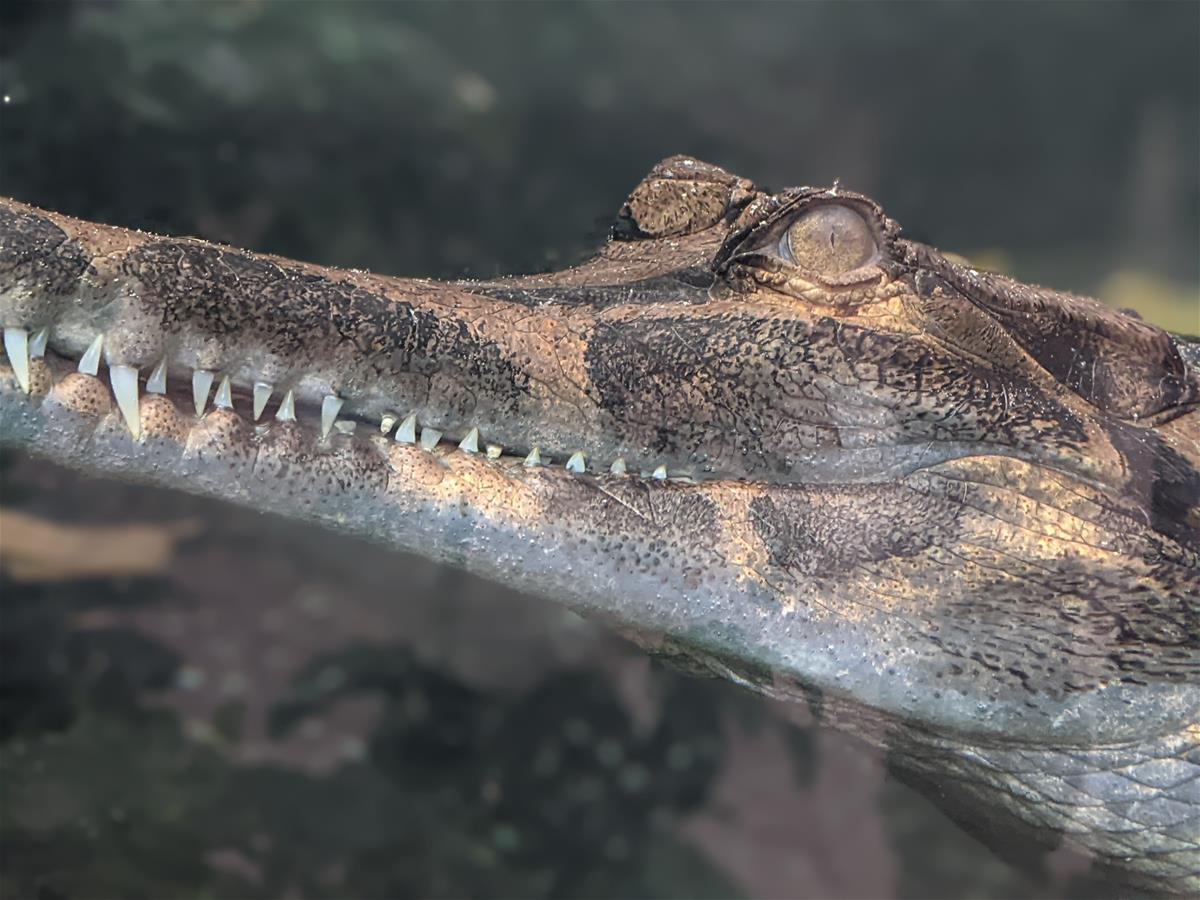False Gharial
Tomistoma schlegelii
The False gharial is a large crocodilian species with a long, narrow snout similar to the true gharial (Gavialis gangeticus). Its body is covered in tough, dark brown to grey scales, and juveniles have distinctive banding. Its snout is less slender than the true gharial's, making it better adapted for hunting a broader range of prey.
HEAD AND BODY LENGTH: 3 to 5 meters (9.8 to 16.4 feet), with some individuals reaching up to 6 meters (19.7 feet).
TAIL LENGTH: Tail comprises a significant portion of the body length and is adapted for swimming.
WEIGHT: 150 to 250 kilograms (330 to 550 pounds), though large individuals can weigh more.
Conservation Status: IUCN

Distribution
Found in rivers, lakes, and swamps of Southeast Asia, particularly on the islands of Borneo, Sumatra, and the Malay Peninsula.
Habitat
Prefers freshwater environments such as peat swamps, slow-moving rivers, and oxbow lakes. It relies on dense vegetation for nesting and cover.
Diet
Opportunistic carnivores, False gharials primarily eat fish but also prey on birds, mammals, and reptiles. Large adults have been known to take deer and other sizable animals.
Reproduction
Females build mound nests out of vegetation and lay 20 to 60 eggs during the dry season. The eggs incubate for 90 to 100 days. Hatchlings are relatively independent but are sometimes guarded by the mother.
Adaptation
Their long, narrow snouts are ideal for catching fish, while their powerful jaws can handle a variety of prey. They are excellent swimmers, using their muscular tails to propel themselves through water. Their cryptic coloration helps them remain camouflaged in murky environments.
Threats to Survival
Habitat loss due to agricultural expansion and logging is the primary threat. Pollution and overfishing reduce prey availability, while hunting and accidental capture in fishing gear further decrease their numbers. Human disturbance near nesting areas also impacts reproduction.














